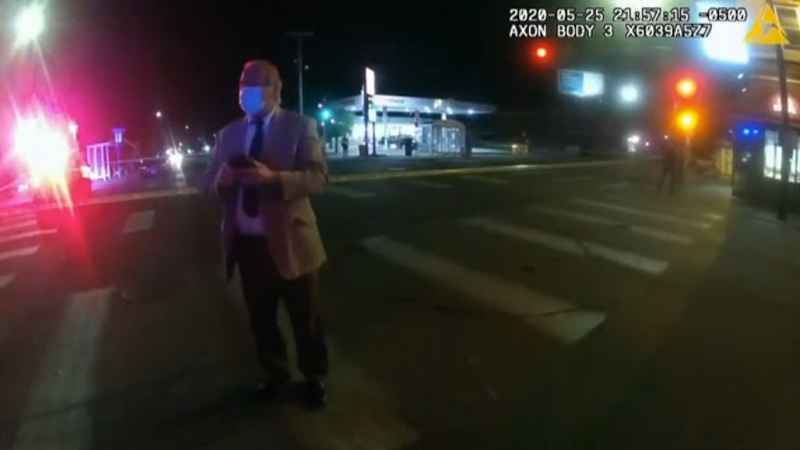Patterns emerge among witnesses called for Chauvin trial
On Friday, two more members of the Minneapolis Police Department testified against former officer Derek Chauvin.
Sgt. Jon Edwards, who is currently on leave, explained how he arrived on scene in the aftermath of George Floyd’s fatal encounter with police and secured the scene.
“Making sure no vehicle or pedestrian traffic entered the crime scene and contaminated our scene,” Edwards said.
He confirmed to state prosecutors that when he told Thomas Lane and J. Alexander Kueng to leave their squad, they didn’t take anything out of the vehicle with them. Both the squad and the SUV Floyd was removed from were towed from the scene.
The jury also saw body camera footage of Lt. Richard Zimmerman, with the homicide unit, arriving on scene. He told the court he’s seen both the bystander video and body camera footage.

This still from a body camera video shows Minneapolis Police Lt. Richard Zimmerman arriving at the scene of 38th Street and Chicago Avenue South the night of George Floyd's death on May 25, 2020, in Minneapolis. Zimmerman testified in court on Friday on Chauvin's use of a neck restraint while taking Floyd into custody.[Court exhibit]
“First of all, pulling him down to the ground face down and putting your knee on a neck for that amount of time is just uncalled for," Zimmerman said in response to state questioning. “I saw no reason why the officers felt they were in danger if that’s what they felt and that’s what they would have to feel to use that kind of force."
Zimmerman testified that kneeling on a suspect’s neck is the top tier of use of force. He said, “that can kill them” and told the court once a person is handcuffed, they should be moved out of the prone position “as soon as possible because it restricts their breathing.”
His testimony comes a day after jurors heard Chauvin’s supervisor Sgt. David Pleoger question the length of the restraint.
“When Mr. Floyd was no longer offering up any resistance to officers, they could’ve ended their restraint,” Pleoger said on Thursday.
Schleicher followed up: “After he was handcuffed on the ground and no longer resisting?”
“Correct," Pleoger responded.
Related stories:
Experts say police use of force also on trial with Derek Chauvin
Experienced trial attorney: Prosecution had ‘huge win’ in Chauvin trial Thursday
Experienced trial lawyer Lee Hutton said the prosecution’s strategy is to keep the jury focused right now.
“You have the professional testimony of the city employees that go one after another basically supporting and adding to each other’s testimony,” Hutton said. “I call that double consciousness. I’m allowing the jury to step into the shoes of that particular witness and see it but not just with one, multiple witnesses to kind of reaffirm what they’re hearing.”
Derek Chauvin’s attorney, Eric Nelson, cross-examined Zimmerman, who has been with the Minneapolis Police Department since 1985.
Nelson said, “I’m presuming that since 1985 until present day, tactics have changed as a police officer?” and Lt. Zimmerman responded, “Some tactics have changed, yes.”
He also confirmed to Nelson that he is not a trainer for the Minneapolis Police Academy and does not teach other officers defensive tactics. Zimmerman later told to state prosecutors that the dangers of the prone position are well known.
The state brought forward 19 witnesses in the first week of testimony, starting with bystanders before moving on to first responders who provided Floyd medical aid.
“It’s a group of witnesses which range from just lay individuals to kids who were at the scene, who testified very similarly, which means that they’re corroborating each other’s testimony and gives it a lot of credibility,” Hutton said.